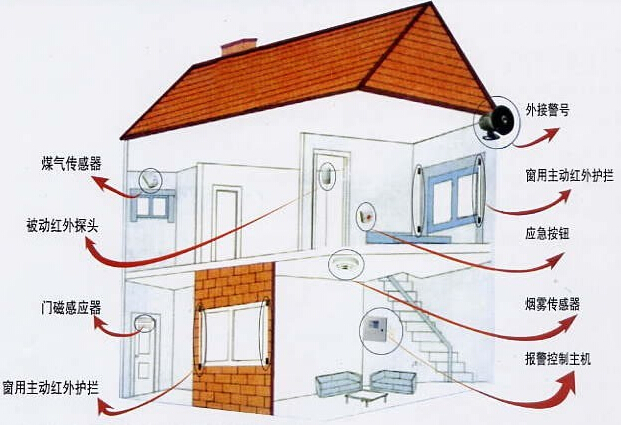Alarm detector is composed of sensors and signal processing. It is used to detect intruder intrusion. The device consisting of electronic and mechanical components is the key to the anti-theft alarm system. The sensor is the core component of the alarm detector. The use of different principles of the sensor components, can constitute different types, different uses, to achieve different detection purposes of the alarm detection device.

(1) Alarm detectors can be divided into infrared alarm detectors, microwave alarm detectors, passive infrared/microwave alarm detectors, glass broken alarm detectors, vibration alarm detectors, ultrasonic alarm detectors, laser alarm detection according to the working principle. , magnetic switch alarm detectors, switch alarm detectors, video motion detection alarms, sound detectors and many other types.
(2) Alarm detectors can be classified into active alarm detectors and passive alarm detectors according to their working methods.
(3) Alarm detectors can be classified into point-controlled alarm detectors, line-controlled alarm detectors, surface-controlled alarm detectors, and space-prevention alarm detectors according to different detection ranges.
In addition to the above distinctions, there are other ways of dividing. In practical applications, different types of alarm detectors can be reasonably selected to meet different security requirements according to different usage conditions.
The alarm detector is used as a sensor detection device to detect the intruder's intrusion behavior and various abnormal conditions. There are many places where security precautions are required in various smart buildings and ordinary buildings. These sites also have various safety precautions and requirements depending on the actual situation. Therefore, a variety of alarm detectors are required to meet different security requirements.
According to the actual site environment and the user's security requirements, a reasonable choice and installation of various alarm detectors can better achieve the purpose of security. When choosing and installing an alarm detector is not appropriate, there may be loopholes in security precautions, failing to meet the strictness of security precautions and creating an opportunity for intruders, thereby bringing undue losses to the security protection work.
Alarm detectors require tamper-proof and vandal-proof functions. When the alarm detector is damaged, people short-circuit or open circuit their transmission lines, and they illegally attempt to open their protective covers, they should all be able to generate alarm signals; in addition, the alarm detectors should also have certain anti-jamming measures to prevent all kinds of errors. The phenomenon of newspapers, such as: pets and small animals harassment, resistance to false alarms caused by changes in environmental conditions and so on.
The sensitivity and reliability of the alarm detectors influence each other. Reasonably selecting the detection sensitivity of the alarm detector and adopting different measures against external interference can improve the performance of the alarm detector. The use of different anti-jamming measures determines the performance of the alarm detector in different environments. Understand the performance and characteristics of various alarm detectors. According to different use environments, rational allocation of different alarm detectors is the key link of an anti-theft alarm system.
Combined Flow Closed Cooling Tower
Closed Cooling Tower is operated by circulating water or fluid, which is divided into two closed loops.
1. Circulation in the tower: the circulating water or fluid passes through the hot zone environment. After the water temperature rises, it enters the surface cooler in the tower, and the heat is sent to the environment outside the tower through the surface cooler and ventilation fan. The cooled circulating water or fluid is sent to the heat source by the water pump.
2. Circulation outside the tower: the spray water is sent to the spray system by the water tank through the water pipe. After spraying, the spray water first exchanges heat with the filler, so that the spray water can be cooled rapidly. At this time, the water contacts the surface of the surface cooler for heat exchange. Part of the hot steam is discharged through the ventilation fan, and the cooled spray water drops to the water tank for secondary circulation to form an external circulation for cooling.
Combined Flow Closed Cooling Tower,Bac Cooling Tower,Cooling Tower Systems,Chiller Tower
Wuxi Ark Fluid Science Technology Co., Ltd. , https://www.arkfluid.com
![<?echo $_SERVER['SERVER_NAME'];?>](/template/twentyseventeen/skin/images/header.jpg)